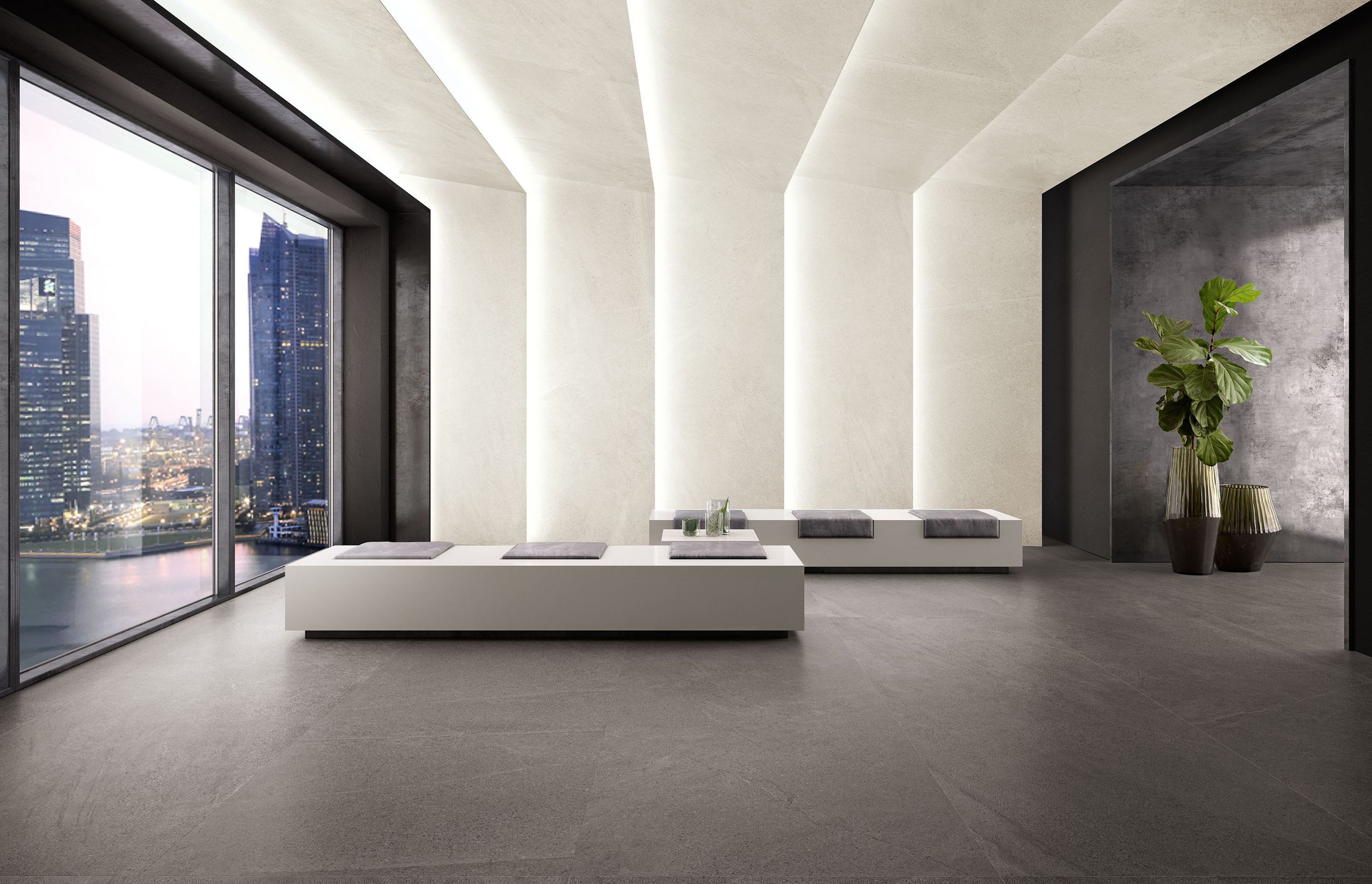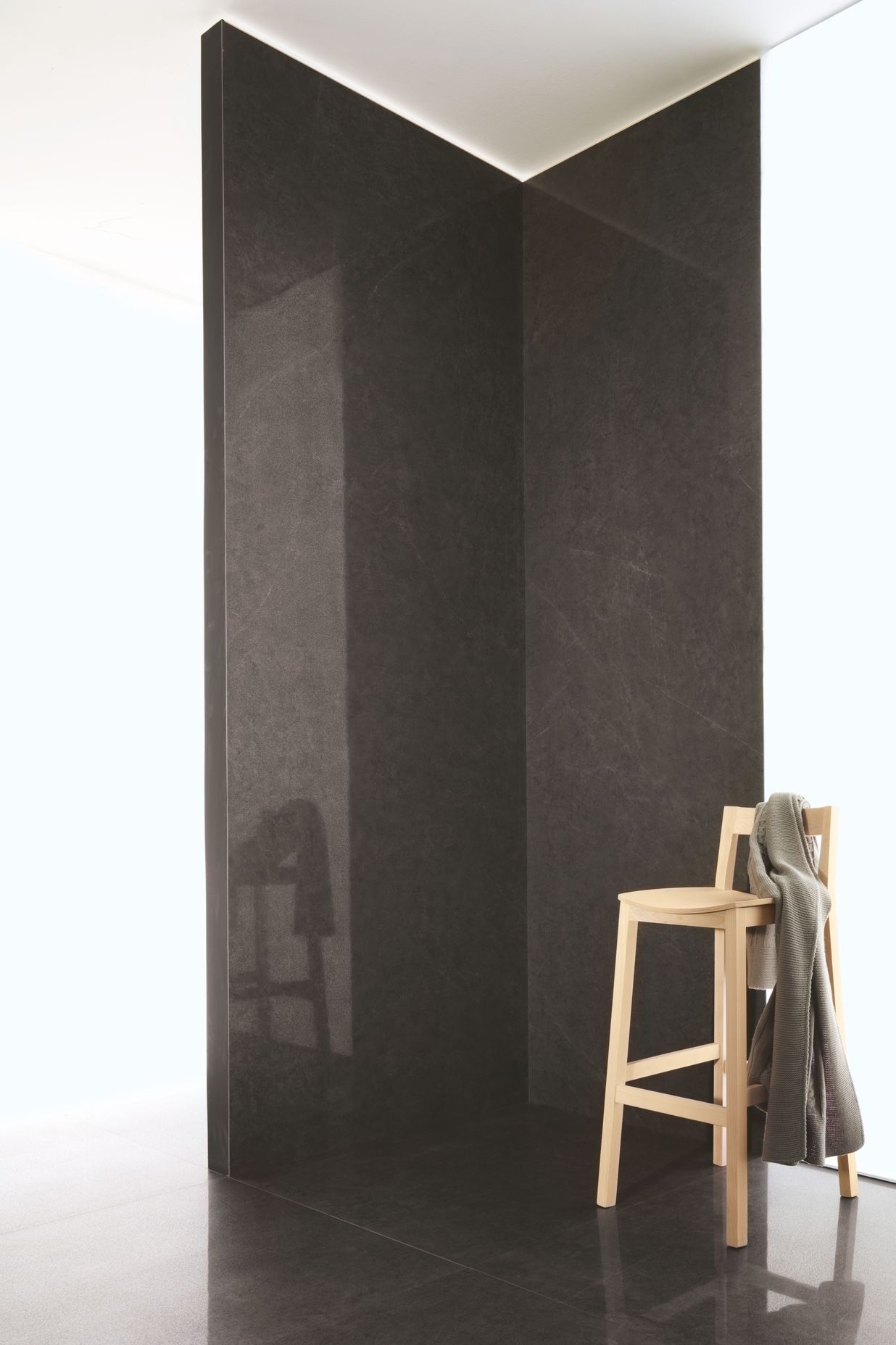The latest iteration of porcelain tile technology is the ability to create tiles as strong as, or stronger, than traditional tiles, but less than a third of the thickness. With standard tiles anywhere between 10 and 12mm thick, a new range of thin-format tiles is just 3mm thick, which opens up a host of possibilities to designers and installers.
The Kerlite tiles, developed by Italian tile maker Cotto D'este, are contemporary in nature, with the smallest size option 0.5m by 1 metre in dimension. “This is possible because of the use of the latest technology that allows these tiles to be thin and also large while retaining the strength of traditional porcelain tiles,” Casa Italiana’s Maurizio Pesciatini says.
Kerlite tiles are manufactured with a fibreglass mesh base, which is the main component allowing for their inherent strength. “Because of this fibreglass mesh, these thin-format tiles are actually stronger than most traditional tiles.”
Their strength is just one aspect that’s drawn architects and specifiers towards this new product though. Another is the ability to easily lay the tiles on top of existing floor coverings, including wood, stone, ceramic or other materials. “Because it’s so thin, this is possible and it saves a lot of time and money being able to install directly on top of what already exists,” Maurizio says. “In many cases this wouldn’t be possible with traditional tiles because by the time you have a tile that’s up to 12mm thick and then a couple of millimetres of glue underneath that, you’ve got a significantly raised floor level, that doesn’t generally work underneath doors, for example.”
The largest size available in the Kerlite ranges is 1x3 metres, which was primarily designed for commercial applications. In residential settings, Maurizio says he’s finding the most popular sizes are 1x2.5 metres. “Using this size thin-format tiles in a bathroom for example can create a truly stunning effect, especially if it’s a marble-look tile.”
Because of the size, grout lines are minimal or not visible at all as they are with smaller tiles, and due to the tile’s limited thickness, they are also significantly lighter than traditional floor tiles, which one person would struggle to install alone at this size. “With thin-format tiles, that issue is gone and it’s relatively easy for one person to install the larger format tiles.”
They’re also easier to cut, and can be cut into any shape from round to almost anything you could imagine. “Cutting these tiles is so easy. We can provide special knives designed for the purpose and it’s very similar to cutting paper with a knife, you cut these tiles in the same way.”
Casa Italiana offers two collections of Kerlite tiles, the first is a very artistic range called Wonderwall, which looks like wallpaper. This range is commonly used to create feature walls or spaces. The other collection is a more luxurious range, which incorporates the marble-look tiles. “This is the range that we see people using to create elegant bathrooms or beautiful features and highlights in their homes,” Maurizio says.
Thin-format tiles are also being specified for splashbacks more commonly that other materials due to the ease of installation and ability to use just one tile to create a splashback.
Visit Casa Italiana on ArchiPro for some inspiration and the latest trends and technology in Italian tiles.



